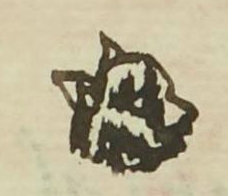Ocelotl (MH486v)
This black-line drawing of the simplex glyph for the personal name Ocelotl (here, attested as a man's name) shows a profile of the head of a jaguar facing toward the viewer's right. Its coat is mottled.
Stephanie Wood
Ocelotl does not equate to ocelot in English, but rather means jaguar. The ocelotl served as a day name in the 260-day divinatory calendar called the tonalpohualli. When babies were given this name, it would originally have had a companion number from 1 to 13. By 1560, when this manuscript was made, these numbers were either fading our of use, or they were suppressed to reduce a recognition of the continued influece of the pre-contact calendar and its religious associations. Jaguars and eagles were also the mascots for Aztec warriors.
Stephanie Wood
Juā ocelotl
Juan Ocelotl
Stephanie Wood
1560
Stephanie Wood
jaguars, jaguares, animales, calendarios, días, days, dates, fechas, calendars

ocelo(tl), jaguar, https://nahuatl.wired-humanities.org/content/ocelotl
El Jaguar
Stephanie Wood
Matrícula de Huexotzinco, folio 486v, World Digital Library, https://www.loc.gov/resource/gdcwdl.wdl_15282/?sp=45&st=image.
This manuscript is hosted by the Library of Congress and the World Digital Library; used here with the Creative Commons, “Attribution-NonCommercial-ShareAlike 3.0 License” (CC-BY-NC-SAq 3.0).





